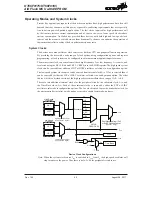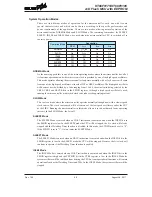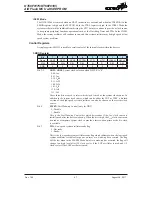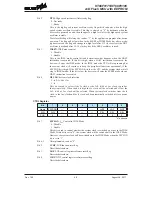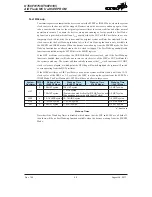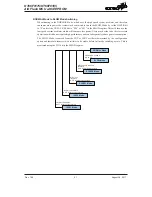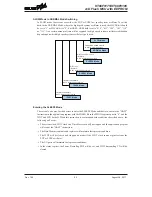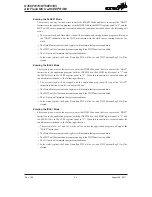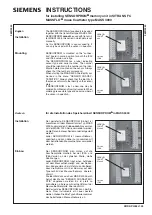
Rev. 1.50
40
����st ��� �01�
Rev. 1.50
41
����st ��� �01�
HT66F0175/HT66F0185
A/D Flash MCU with EEPROM
HT66F0175/HT66F0185
A/D Flash MCU with EEPROM
Oscillator
Various oscillator types offer the user a wide range of functions according to their various application
requirements. The flexible features of the oscillator functions ensure that the best optimisation can
be achieved in terms of speed and power saving. Oscillator selections and operation are selected
through a combination of configuration options and relevant control registers.
Oscillator Overview
In addition to being the source of the main system clock the oscillators also provide clock sources
for the Watchdog Timer and Time Base Interrupts. External oscillators requiring some external
components as well as fully integrated internal oscillators, requiring no external components, are
provided to form a wide range of both fast and slow system oscillators. All oscillator options are
selected through configuration options. The higher frequency oscillators provide higher performance
but carry with it the disadvantage of higher power requirements, while the opposite is of course true
for the lower frequency oscillators. With the capability of dynamically switching between fast and
slow system clock, the device has the flexibility to optimize the performance/power ratio, a feature
especially important in power sensitive portable applications.
Type
Name
Frequency
Pins
Hi�h Speed External Crystal
HXT
400 kHz~�0 MHz
OSC1/OSC�
Hi�h Speed Internal RC
HIRC
�/1�/16 MHz
—
Low Speed External Crystal
LXT
3�.�6� kHz
XT1/XT�
Low Speed Internal RC
LIRC
3� kHz
—
Oscillator Types
System Clock Configurations
There are four methods of generating the system clock, two high speed oscillators for all devices and
two low speed oscillators. The high speed oscillator is the external crystal/ceramic oscillator, HXT,
and the internal 8/12/16MHz RC oscillator, HIRC. The two low speed oscillators are the internal 32
kHz RC oscillator, LIRC, and the external 32.768 kHz crystal oscillator, LXT. Selecting whether the
low or high speed oscillator is used as the system oscillator is implemented using the HLCLK bit
and CKS2~CKS0 bits in the SMOD register and as the system clock can be dynamically selected.
The actual source clock used for each of the high and low speed oscillators is chosen via
configuration options. The frequency of the slow speed or high speed system clock is also
determined using the HLCLK bit and CKS2~CKS0 bits in the SMOD register. Note that two
oscillator selections must be made namely one high speed and one low speed system oscillators.



















